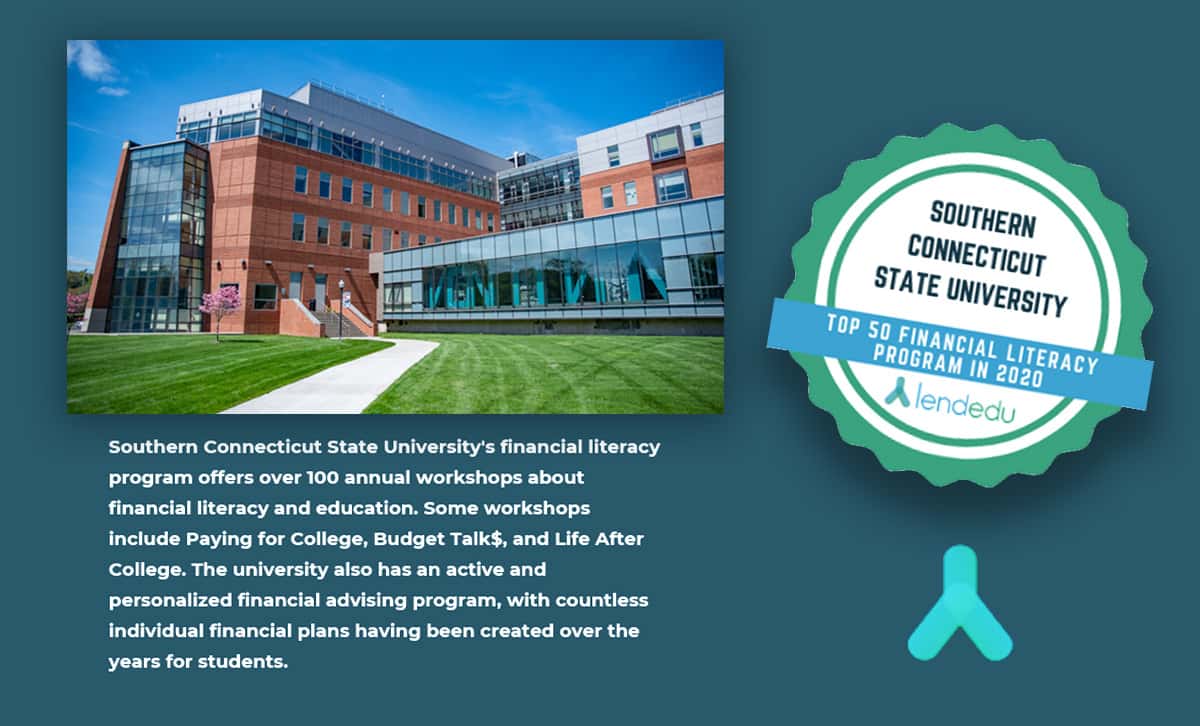In a world where student debt looms large and financial decisions shape lifelong trajectories, colleges are reimagining how they teach financial literacy. No longer confined to dusty textbooks or one-off seminars, financial education is evolving into a dynamic, hands-on experience tailored to today’s diverse student body. From interactive simulations to integrated curricula and real-world mentorship programs, institutions are crafting new pathways to empower students with the knowledge and confidence to navigate their financial futures. This article explores the innovative approaches colleges are adopting to transform financial literacy from an abstract concept into an essential life skill.
Table of Contents
- Innovative Approaches to Financial Literacy Curriculum
- Integrating Real World Experiences into Classroom Learning
- Leveraging Technology to Engage the Modern Student
- Collaborations Between Colleges and Financial Institutions
- Tailoring Financial Education to Diverse Student Needs
- Frequently Asked Questions
- Concluding Remarks

Innovative Approaches to Financial Literacy Curriculum
Today’s financial literacy courses are breaking free from traditional lectures, embracing dynamic, hands-on experiences that resonate with students’ real-world challenges. Instead of merely teaching budgeting or saving techniques, colleges are integrating simulation games and interactive apps that mimic market fluctuations, credit scoring, and investment strategies. This immersive approach not only boosts engagement but also allows students to experiment with financial decisions without real-world risks.
Another trend gaining momentum is the inclusion of cross-disciplinary content. Financial literacy is no longer siloed within economics departments; it intersects with psychology, sociology, and even technology. By exploring how behavioral biases influence spending or how fintech innovations are reshaping banking, students gain a holistic perspective that prepares them for the complexities of modern finance.
Peer-to-peer learning is also becoming a cornerstone of these innovative curricula. Many colleges facilitate student-led workshops, discussion forums, and mentorship programs where learners share personal experiences and strategies. This community-driven model fosters a supportive environment where financial concepts become relatable and applicable.
- Real-world project collaborations with local businesses to manage budgets and finances
- Integration of cryptocurrency basics and blockchain technology insights
- Workshops on financial ethics and sustainable investing
| Innovative Method | Key Benefit | Example Activity |
|---|---|---|
| Simulation Games | Safe experimentation | Stock market challenge |
| Peer Workshops | Community learning | Budgeting peer reviews |
| Cross-disciplinary Modules | Broader understanding | Behavioral finance case studies |
Integrating Real World Experiences into Classroom Learning
Colleges are increasingly moving beyond traditional lectures to immerse students in practical financial scenarios that mirror real life. Hands-on workshops, simulation games, and live projects allow students to tackle budgeting, investing, and debt management firsthand. This experiential learning fosters a deeper understanding of financial concepts, making abstract numbers and theories tangible and relevant.
Some of the innovative methods include:
- Collaboration with local businesses for internships focused on financial planning
- Use of interactive software that mimics stock market trading and personal finance management
- Role-playing exercises where students act as financial advisors or clients
- Community-based projects involving real budgeting and fundraising challenges
To illustrate the impact, here’s a comparison of traditional versus experiential learning outcomes observed in recent studies:
| Learning Approach | Concept Retention | Practical Application | Student Engagement |
|---|---|---|---|
| Traditional Lecture | 65% | 40% | 50% |
| Experiential Learning | 85% | 80% | 90% |
By embedding real-world financial challenges into the curriculum, institutions not only enhance knowledge but also build confidence. Students leave equipped not just with facts, but with the skills to navigate their personal financial journeys confidently and responsibly.

Leveraging Technology to Engage the Modern Student
In today’s digital era, educators are boldly integrating cutting-edge technology to make financial literacy not only accessible but truly engaging. Interactive apps and gamified learning platforms have transformed traditional lectures into dynamic experiences where students can simulate real-world financial decisions. These tools allow learners to experiment with budgeting, investing, and credit management in a risk-free environment, fostering confidence and practical understanding.
Virtual reality (VR) and augmented reality (AR) are also making waves in classrooms, offering immersive scenarios like navigating a virtual stock market or managing expenses in a simulated apartment. Such immersive methods cater to diverse learning styles and help students internalize complex concepts through hands-on practice rather than rote memorization.
Additionally, colleges are leveraging data analytics to personalize financial education. By tracking student progress and engagement, instructors can tailor content to address specific gaps or interests, ensuring a customized learning journey. This data-driven approach not only enhances motivation but also increases retention of critical financial skills.
- Mobile Apps: Real-time budgeting and savings challenges
- Interactive Simulations: Virtual stock trading and loan management
- AI Tutors: Personalized financial advice and feedback
- Collaborative Platforms: Peer-to-peer learning and group projects
| Technology | Benefit | Example |
|---|---|---|
| Gamification | Boosts engagement and retention | Financial literacy games like “Budget Hero” |
| VR/AR | Immersive learning experiences | Simulated stock market trading |
| Data Analytics | Personalized learning paths | Adaptive quizzes and feedback |

Collaborations Between Colleges and Financial Institutions
In recent years, an innovative approach has emerged where colleges are partnering directly with financial institutions to enrich their financial literacy programs. These collaborations allow students to gain firsthand experience with real-world financial tools and advice, bridging the gap between theoretical knowledge and practical application. Through workshops, guest lectures, and co-created curricula, students are exposed to authentic financial scenarios that prepare them for life beyond campus.
Many institutions have established student-focused financial hubs on campus, often staffed by representatives from partner banks or credit unions. These hubs serve as accessible resources where students can receive personalized guidance on budgeting, credit management, and investing. By embedding financial experts into the academic environment, colleges foster a support system that encourages informed decision-making and responsible money management.
Additionally, technology-driven initiatives have flourished from these partnerships. Customized mobile apps and online platforms developed jointly by colleges and financial firms provide interactive budgeting tools, credit score tracking, and financial goal-setting features. This digital integration ensures that financial literacy is not confined to a classroom but becomes a continuous, engaging experience for students.
- Workshops on student loans and repayment strategies
- Simulated investing challenges with real market data
- Financial wellness fairs featuring local banks
- Credit building programs tailored for young adults
| Partner Institution | Program Focus | Student Engagement |
|---|---|---|
| CityBank Credit Union | Budgeting & Savings | Monthly workshops & app support |
| Greenfield Financial | Investment Basics | Simulated trading competitions |
| Unity Bank | Credit Education | One-on-one counseling sessions |
Tailoring Financial Education to Diverse Student Needs
Financial education in colleges is evolving beyond one-size-fits-all approaches. Recognizing that students come from varied backgrounds-cultural, socioeconomic, and academic-institutions are crafting programs that resonate with each unique learner. This customization ensures that financial literacy is not just taught, but deeply understood and applied.
Adaptive curricula are at the forefront, featuring modular content that students can navigate based on their prior knowledge and personal goals. For instance, first-generation college students might explore topics on budgeting and managing student loans, while business majors might dive deeper into investment strategies and market analysis.
Many schools are also incorporating interactive tools such as simulations, mobile apps, and peer-led workshops. These resources encourage engagement and provide real-world scenarios tailored to different lifestyles and financial challenges. By doing so, colleges foster an environment where financial literacy becomes relevant and actionable for everyone.
- Workshops addressing cultural attitudes towards money
- Language-specific resources for international students
- Career-specific financial planning modules
- Flexible scheduling to accommodate diverse student availability
| Student Group | Focus Area | Teaching Method |
|---|---|---|
| First-Generation Students | Budgeting & Loans | Peer mentoring & case studies |
| International Students | Currency & Banking Systems | Multilingual webinars |
| Business Majors | Investments & Markets | Simulations & expert panels |
| Part-Time Students | Time & Money Management | Flexible online modules |
Frequently Asked Questions
Q: Why is financial literacy becoming a priority in college education?
A: With rising student debt and complex economic landscapes, colleges recognize that equipping students with financial skills is essential for lifelong success. Financial literacy helps graduates manage money wisely, avoid pitfalls, and build a secure future.
Q: How are colleges innovating beyond traditional lectures to teach financial literacy?
A: Many institutions are moving past textbook lessons by incorporating interactive workshops, real-life simulations, and gamified learning tools. These methods engage students actively, making financial concepts tangible and memorable.
Q: What role does technology play in modern financial literacy programs?
A: Technology powers apps, online modules, and virtual advisors that personalize learning. Students can track budgets, simulate investments, and receive instant feedback, fostering hands-on experience in a safe digital environment.
Q: Are colleges tailoring financial education to diverse student needs?
A: Absolutely. Programs are increasingly customized to address varying backgrounds-such as first-generation students, international learners, or those from underprivileged communities-ensuring relevance and accessibility.
Q: How do experiential learning opportunities enhance financial literacy on campus?
A: Experiential learning-like managing student-run funds, internships with financial firms, or community financial coaching-allows students to apply theory in real-world contexts, deepening understanding and confidence.
Q: What partnerships are colleges forming to enrich financial literacy education?
A: Institutions often collaborate with banks, nonprofits, and fintech startups to bring expert knowledge and resources into the classroom, bridging academic learning with industry insights.
Q: How is financial literacy being integrated across different academic disciplines?
A: Beyond business schools, financial concepts are woven into courses in psychology, sociology, and even arts programs, highlighting the universal importance of money management in various life and career paths.
Q: What are some measurable outcomes of these new teaching approaches?
A: Students report greater confidence in budgeting, reduced reliance on credit, and improved savings habits. Some colleges track long-term impacts, noting better financial health and decision-making among alumni.
Q: Can these innovative financial literacy programs serve as models for other educational institutions?
A: Yes. By combining creativity, inclusivity, and technology, these programs offer scalable frameworks that other colleges can adapt to meet their students’ unique needs.
Q: What’s next for financial literacy education in higher education?
A: The future points toward even more personalized learning experiences, integration with emerging financial technologies like cryptocurrencies, and expanded focus on financial wellness as a key component of student success.
Concluding Remarks
As the landscape of higher education evolves, so too does the approach to financial literacy-transforming from traditional lectures into dynamic, real-world experiences. Colleges are no longer just imparting knowledge; they are cultivating confidence, critical thinking, and lifelong money management skills. By embracing innovative methods, these institutions are equipping students not only to survive but to thrive in an increasingly complex financial world. In this new era of education, financial literacy is not just a course-it’s a cornerstone of personal empowerment.

